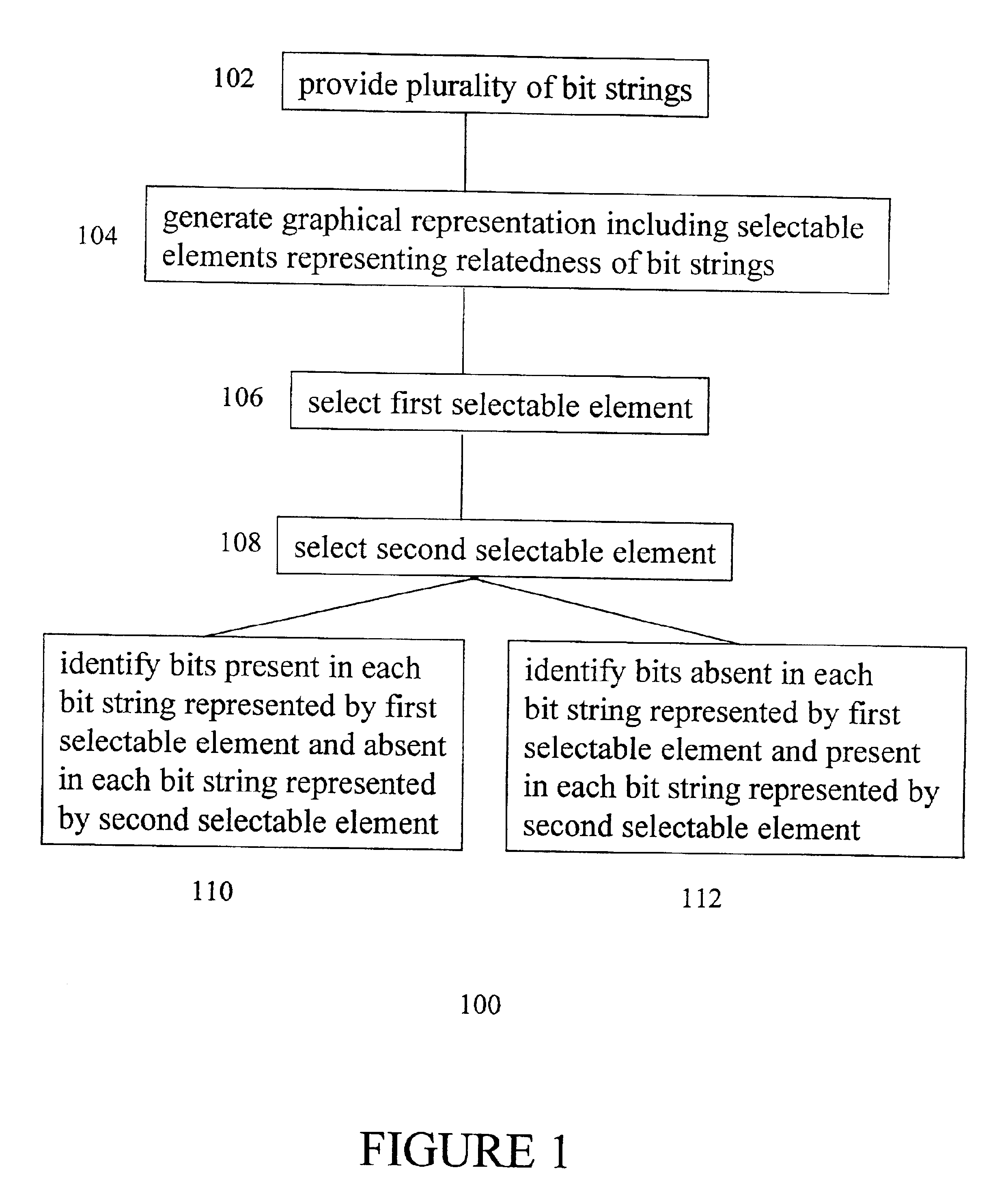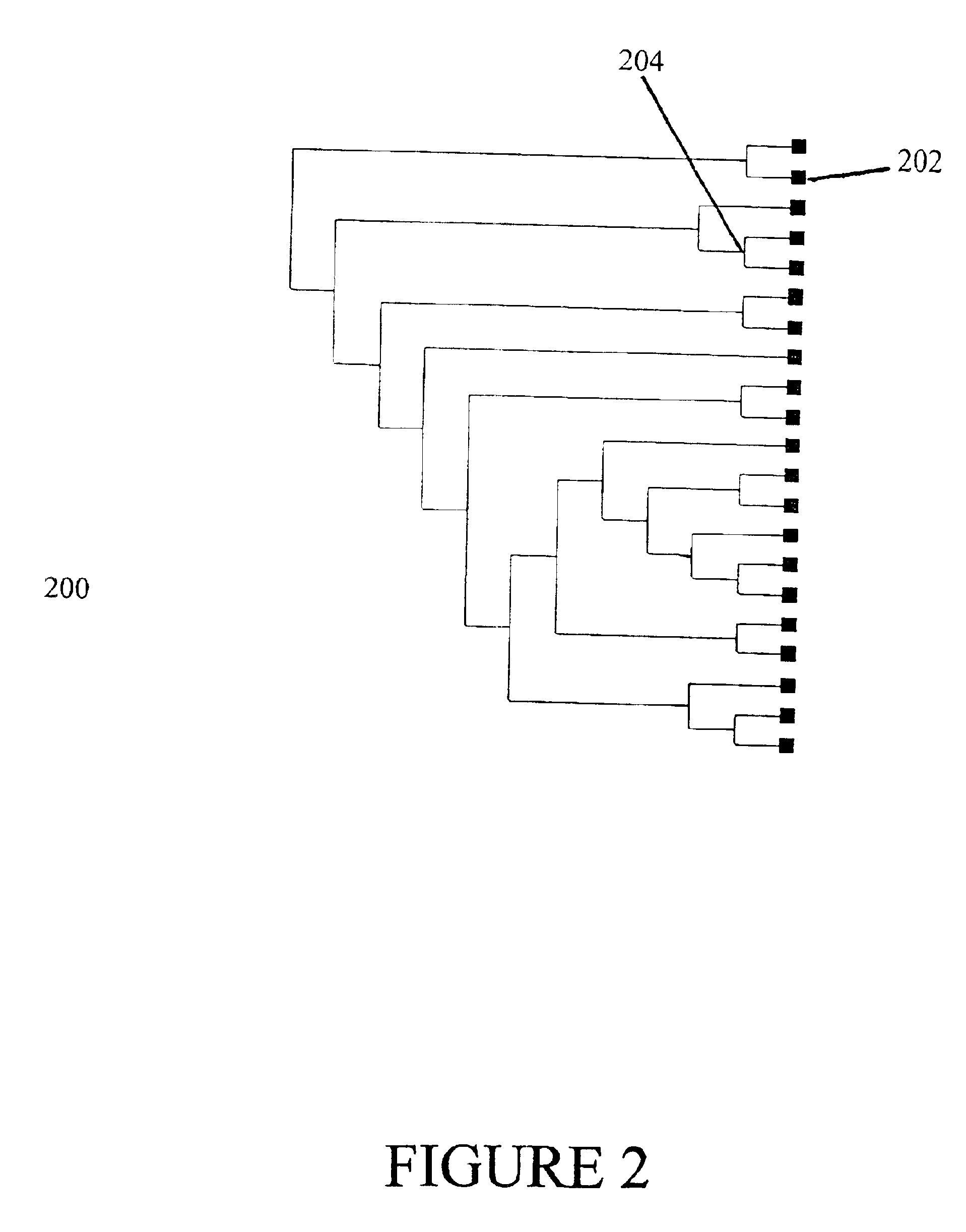Method for identifying polymorphic markers in a population
a polymorphic marker and population technology, applied in the field of population and molecular genetics, can solve the problems of complex methods, higher cost and a slower turnaround time, and associated costs
- Summary
- Abstract
- Description
- Claims
- Application Information
AI Technical Summary
Benefits of technology
Problems solved by technology
Method used
Image
Examples
Embodiment Construction
Fabrication of a L. monocytogenes 10403S Shotgun Microarray
To demonstrate the feasibility of using array-based methods to identify genomic diversity in Listeria monocytogenes isolates, a shotgun DNA microarray was constructed from strain 10403S. This was accomplished by printing 4,350 PCR amplified inserts from a L. monocytogenes 10403S DNA library in duplicate onto silicanated glass slides. To prepare a library as representative as possible, the library was constructed using the TOPO.RTM. shot-gun library construction kit (Invitrogen, CA) that shears the genomic DNA with high-pressure air to an average size of 1.5 kilobases. The sheared DNA fragments were then blunt-ended with Klenow and T4-DNA polymerase, followed by dephosphorylation to prevent ligation of non-contiguous fragments in the library. The dephosphorylated DNA fragments were then cloned into the pTopo vector. Individual colonies were immediately transferred to 96-well plates. Amplified inserts from independent clones w...
PUM
| Property | Measurement | Unit |
|---|---|---|
| diameters | aaaaa | aaaaa |
| volume | aaaaa | aaaaa |
| polymorphic | aaaaa | aaaaa |
Abstract
Description
Claims
Application Information
 Login to View More
Login to View More - R&D
- Intellectual Property
- Life Sciences
- Materials
- Tech Scout
- Unparalleled Data Quality
- Higher Quality Content
- 60% Fewer Hallucinations
Browse by: Latest US Patents, China's latest patents, Technical Efficacy Thesaurus, Application Domain, Technology Topic, Popular Technical Reports.
© 2025 PatSnap. All rights reserved.Legal|Privacy policy|Modern Slavery Act Transparency Statement|Sitemap|About US| Contact US: help@patsnap.com


